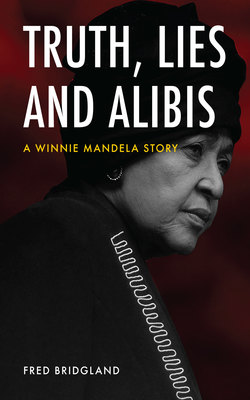Читать книгу Truth, Lies and Alibis - Fred Bridgland - Страница 5
На сайте Литреса книга снята с продажи.
Prologue
ОглавлениеThere is no crueller tyranny than that which is perpetuated under the shield of law and in the name of justice.
Charles de Montesquieu
In Latin, alibi means “somewhere else”.
One New Year’s Eve, when Mrs Winnie Mandela was still married to Nelson Mandela, a small 14-year-old boy named Stompie Moeketsi was beaten up behind her house in Soweto, the sprawling township south-west of Johannesburg into which some two million black people were forced during South Africa’s apartheid era. Stompie was later found dead on waste ground with his throat cut.
Two years elapsed after that fateful New Year’s Eve before Mrs Mandela first claimed that she was not present at the time of the assault on Stompie and his killing, but 360 kilometres away in Brandfort, a small Orange Free State farming centre. Winnie’s legal representative, Advocate George Bizos, successfully touted the Brandfort alibi for Mandela when she was charged in a famous trial with kidnapping and assaulting the murdered Stompie. If she was “somewhere else”, of course, she could not have committed the crime, Bizos argued.
However, South Africa’s post-apartheid Truth and Reconciliation Commission (TRC) later concluded that the alibi was a fiction, the tallest of tales. It reached that verdict after its commissioners, led by Archbishop Desmond Tutu, had subpoenaed Mrs Mandela and listened to eleven days of testimony on the Stompie affair.
Many witnesses testified to the TRC, as several had already done in two court trials, that they saw Mrs Mandela and her notorious bodyguard-cum-vigilante group, the bizarrely named Mandela United Football Club, kick, punch and whip Stompie. One youth told the commissioners that he watched Mrs Mandela stab Stompie next to the jacuzzi behind her house, and an older man, one of her drivers, declared that was when the boy died and said that he had defied Mrs Mandela’s order to remove the body.
By the time the TRC hearing was convened, fully six years after Mrs Mandela’s trial, two senior South African judges had declared the false alibi to be the truth. As a result, Winnie Mandela escaped serious punishment in relation to Stompie’s assault and murder.
Following the TRC’s confirmation of the true story – that indeed she was not in Brandfort – she was not charged with perjury by the nation’s prosecuting authority. How did this come about, and how high in the ranks of South Africa’s National Party and African National Congress political establishments was the Brandfort alibi concocted? What does this mean for politicians’ respect for the rule of law in the democratic era? It is the main purpose of this book to try to answer these questions.
